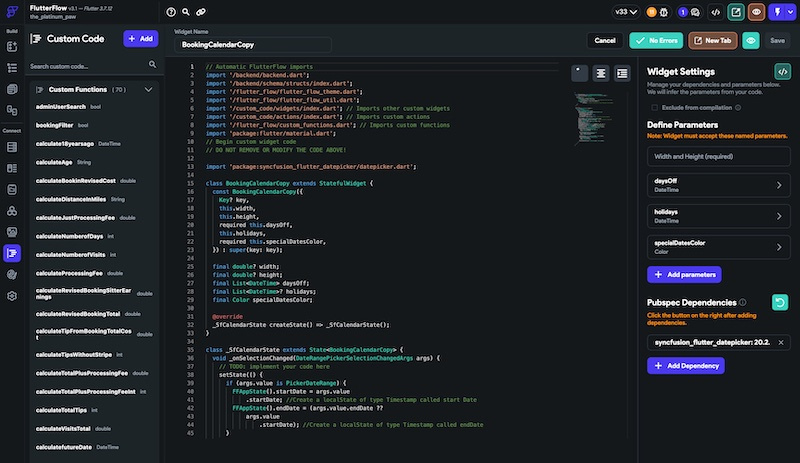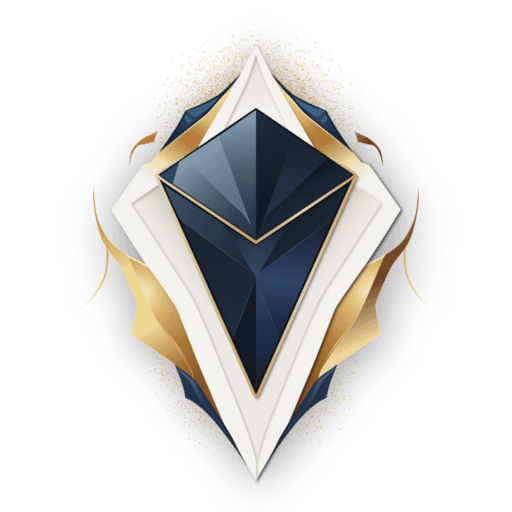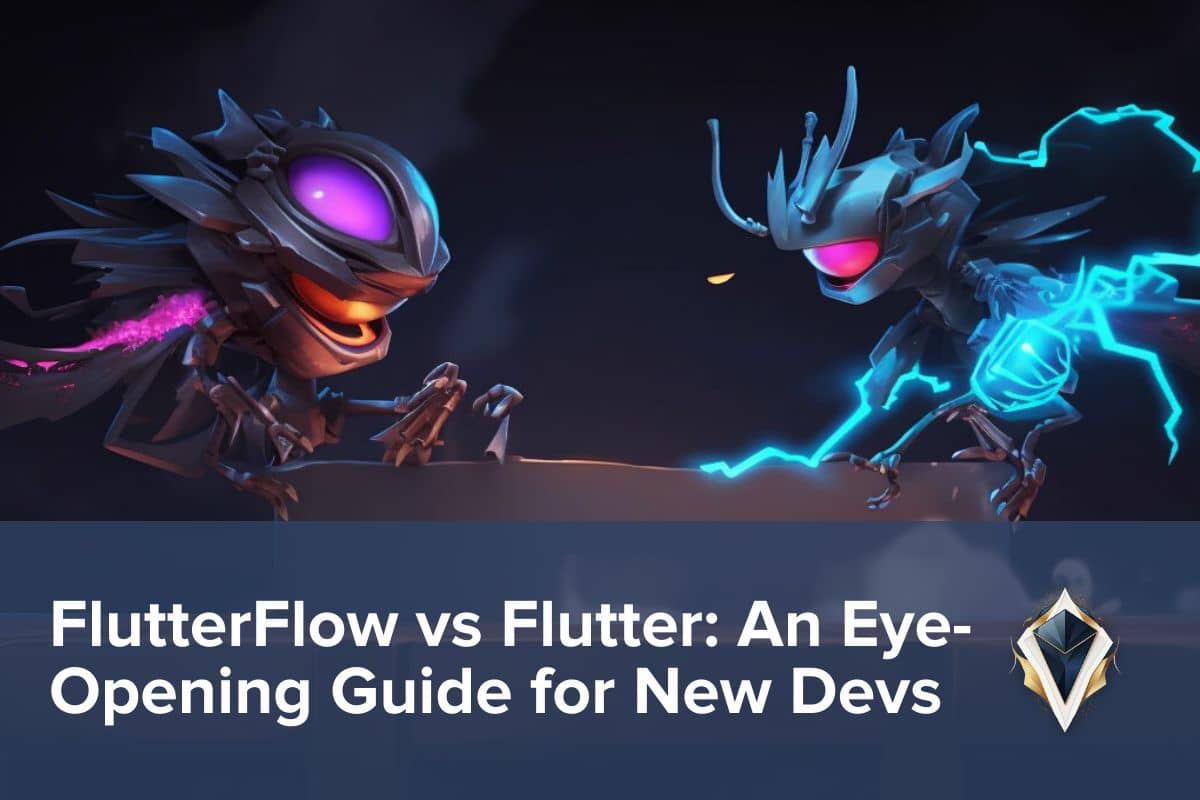To code, or not to code… That is the question that many of us face in the digital realm of app development. As we plunge into the exciting ocean of technological innovation, we find ourselves caught in the cross currents of traditional coding and new, streamlined low-code solutions. Therein lies the heart of the debate we’re going to explore today: FlutterFlow vs Flutter.
This vibrant showdown is more than just a comparison; it’s a symphony of innovation, a dance between flexibility and simplicity, and a quest to find the sweet spot in the broad spectrum of app design. From the power of Flutter’s customizable code to the streamlined elegance of FlutterFlow’s visual interface, we’ll dive deep to understand their unique rhythms and flows.

Strap in and get ready, because we’re about to embark on an enlightening journey through the dynamic landscape of FlutterFlow vs Flutter!
Understanding Flutter
 Originating from the tech giant Google, Flutter has created a substantial footprint in the realm of cross-platform mobile app development. But what exactly is Flutter? Let’s break it down.
Originating from the tech giant Google, Flutter has created a substantial footprint in the realm of cross-platform mobile app development. But what exactly is Flutter? Let’s break it down.
Flutter is an open-source UI software development kit that was primarily designed for creating visually appealing apps for mobile, web, and desktop from a single codebase. Its raison d’être is to provide a fast, beautiful, and efficient way of building applications. Flutter uses Dart, a robust, object-oriented programming language also developed by Google, as its primary language.
So why should developers consider Flutter for app development? One of the main reasons is its hot reload feature, which allows developers to see changes in the code almost instantly, thus improving productivity and speeding up the development process. Other selling points include its rich, customizable widget library, enabling a truly unique and native-feel UI/UX. The single codebase philosophy of Flutter further ensures consistency across platforms and eases the burden of maintaining and debugging code.
However, Flutter is not without its drawbacks. Its heavy reliance on Dart means developers unfamiliar with this language face a learning curve. Moreover, Flutter apps tend to be larger in size compared to those built with other frameworks, which can be a potential issue for users with limited storage space.
In summary, Flutter offers a unique combination of speed, efficiency, and visual appeal, making it a strong contender in the app development field. Its few shortcomings, however, are aspects developers need to take into consideration.
Understanding FlutterFlow
 Building on the foundation of Flutter, FlutterFlow emerges as an innovative tool that transforms the way developers build apps. But what exactly is FlutterFlow? Let’s dissect it.
Building on the foundation of Flutter, FlutterFlow emerges as an innovative tool that transforms the way developers build apps. But what exactly is FlutterFlow? Let’s dissect it.
FlutterFlow is a low-code tool designed to simplify the development process by allowing users to build applications visually. The “low-code” aspect implies that it requires less hand-coding and aims to increase speed of delivery, while maintaining the quality of the software.
If you don’t have a FlutterFlow account, you can sign up for free here.
The allure of FlutterFlow lies in its user-friendly interface. Even those with minimal coding knowledge can construct a functional app with a captivating user interface. By visually dragging and dropping widgets and defining their behavior, you can bring your app idea to life swiftly and efficiently.
Additionally, FlutterFlow boasts strong integration capabilities. You can easily connect your app with Firebase for backend services and incorporate APIs to extend functionality. Its prototyping capabilities are commendable, allowing users to create interactive prototypes and share them with stakeholders.
Despite its benefits, FlutterFlow is not without its limitations. For complex, large-scale applications, a low-code tool might not offer the same level of flexibility and control as traditional coding. Moreover, as of now, FlutterFlow only supports Flutter, limiting its reach compared to other low-code platforms supporting multiple frameworks.
In a nutshell, FlutterFlow is an excellent tool for swift and simplified app development, particularly for less complex applications or rapid prototyping. Its limitations, however, might make it less suitable for more intricate, large-scale projects.
Comparing FlutterFlow vs Flutter
Comparing FlutterFlow vs Flutter could be likened to comparing using a meal kit service vs cooking from scratch.
Imagine Flutter as the process of cooking from scratch. You have all the freedom to choose your ingredients, follow or modify your recipe as you like, and ultimately create a dish exactly the way you want it. This process, while it provides a lot of control and flexibility, requires a certain level of skill and time. You need to know how to prepare the ingredients, follow the recipe, and possibly troubleshoot if things don’t go as planned.
On the other hand, think of FlutterFlow as using a meal kit service. The meal kit comes with all the ingredients pre-portioned and a step-by-step guide on how to cook the dish. It simplifies the cooking process, saves time, and still ends up with a tasty meal, even if you’re not an experienced cook. However, there’s less room for customization, and sometimes, you may find the dish isn’t exactly the way you’d make it if you had complete control.
Both methods will result in a meal (or in the case of our analogy, a mobile app), but the journey and the end result can be quite different. Your choice depends on your skills, the time you have, and the level of customization and control you desire.
- User Interface and Experience: Flutter allows for rich, customizable widgets, providing an engaging and native-feel UI/UX. However, its UI design requires a sound understanding of the Dart language. On the other hand, FlutterFlow offers a user-friendly, drag-and-drop interface. It simplifies the UI design process, making it accessible to even those with minimal coding skills.
- Flexibility and Customization: Flutter is highly flexible, enabling developers to build anything from simple to complex apps. However, this flexibility comes with the caveat of a steep learning curve for Dart. FlutterFlow, while easier to use, might not provide the same level of customization and flexibility, especially for complex apps.
- Development Speed: Flutter’s hot reload feature speeds up the development process, allowing for instant previews of changes. FlutterFlow takes this a step further, offering a visual interface for app design and automating many development tasks, potentially resulting in faster app delivery.
Another perfect analogy to help clarify FlutterFlow vs Flutter: FlutterFlow is to Flutter as assembling IKEA furniture is to woodworking.
In this case, Flutter is akin to woodworking. It’s versatile and gives you the freedom to create anything from a simple stool to an elaborate cupboard, offering full control over the design, material, and building process. However, it requires a solid understanding of carpentry and takes considerable time and effort.
On the other hand, FlutterFlow is like assembling IKEA furniture. The pieces are pre-made and come with a manual for you to put them together. It’s quicker, more convenient, and doesn’t require expert carpentry skills. But it’s built on the basis of woodworking, and if you want to customize the furniture beyond IKEA’s design, you would need to have some woodworking skills.
This analogy highlights that both methods ultimately achieve the same goal (building furniture or developing an app), but the process, required skill set, and level of customization are different.
Case Study: App Development with FlutterFlow vs Flutter
To better illustrate the differences between FlutterFlow vs Flutter, let’s walk through a hypothetical scenario of developing a simple food delivery app using both tools.
App Development with Flutter: The development process starts with setting up the Flutter environment and understanding Dart syntax. For UI design, we hand-code the widgets and design the app’s structure. Here, we can take full advantage of Flutter’s wide range of customizable widgets. The integration of backend services like user authentication and order management requires writing additional code.
Although the hot reload feature helps speed up the development process, it still takes substantial time to build a functional, user-friendly app from scratch.
App Development with FlutterFlow: Starting with FlutterFlow, we immediately begin with the UI design, thanks to the drag-and-drop interface. Placing widgets on the screen, defining their behavior, and designing app flow turns out to be a swift process. FlutterFlow’s integration with Firebase simplifies backend services integration.
At the end of the development process, we have a functional food delivery app developed in significantly less time. However, if we wish to introduce any complex features not supported by FlutterFlow’s in-built capabilities, we need to manually write Flutter code.
The choice between Flutter and FlutterFlow largely depends on the app complexity, available resources, and the desired level of customization.
Conclusion: FlutterFlow vs Flutter… or Both?
After a thorough exploration of both FlutterFlow vs Flutter, we come to the crux of the matter: Which tool should you choose for your app development journey?
The decision largely hinges on your specific requirements, project complexity, and coding proficiency. For large-scale, complex applications requiring extensive customization and flexibility, Flutter could be the best choice. It gives you full control over the development process, allowing for extensive customization and a unique, captivating UI/UX. However, it does come with the need for a good grasp of Dart.
On the other hand, if you’re aiming for a quick turnaround time, or if you’re relatively new to coding, FlutterFlow is an excellent tool. It simplifies the app development process significantly, letting you design apps visually with its drag-and-drop interface. Its easy integration with Firebase for backend services is another point in its favor.
There’s also a third option: utilizing both. You could start building your app with FlutterFlow for its speed and ease of use, and then switch to Flutter for intricate features requiring more flexibility. This approach lets you leverage the strengths of both platforms.
At the end of the day, there’s no ‘one size fits all’ tool for app development. They are both powerful platforms, each with its unique strengths. By understanding these tools deeply, you can make an informed choice tailored to your specific needs, thereby setting yourself up for a successful app design journey.





0 Comments